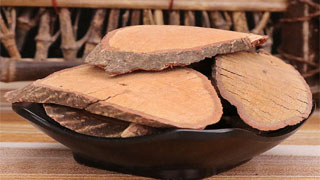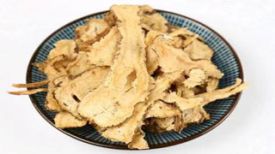
1. Aliases
Shan Da Dao, Jiu Jie Mu, Da Luo Umbrella, An Shan Gong, Dao Gun Mu, Dao Shang Mu, Jiu Jie Zai Tou.
2. Plant morphology
Evergreen shrubs, 1-3 meters tall. Young branches are nearly quadriangular, while old branches are nearly circular and smooth; The branch has obvious nodes. Leaves opposite, papery, elliptical rectangular, with wavy edges, red when dry. The stipules are broad, membranous, and fall early. Panicles terminal and axillary, 3-branched, shorter than upper leaves; Corolla light green or white, lobes short triangular, crown tube wide, lobes lanceolate, everted; Stamens 5, attached to the crown and throat. Drupe nearly spherical, about 6 millimeters long, red when ripe, smooth; Small nuts have 4-5 edges. The flowering period is in autumn.
3. Origin distribution
Born in wilderness shrubs, village edges, forest edges, etc. Distributed in the southwest, south to southeast of China. India, the Indochinese Peninsula, and Japan all have them.
4. Harvesting and processing
Harvest throughout the year, cut off the aboveground parts, and dry them in the sun.
5. Characteristics of medicinal herbs
The stem is cylindrical, the branches are nearly square, the stem nodes are slightly enlarged, or there are circular stipe marks and opposite triangular leaf marks, with a brownish surface and longitudinal cracks; Thin skin, easy to peel off; The cross-section is hollow and circular lines can be seen. The leaves are papery, wrinkled, and the intact leaves unfold into an elongated, elliptical, or needle like shape; The apex gradually becomes pointed, and the base gradually narrows into a stalk; The surface is dark red, and the lower surface is light red. The network veins are prominent, and clusters of short pubescence can be seen in the armpits of the lateral veins. Slight breath, light taste. It is best to have thick and uniform stems and branches with a brownish red color.
6. Nature, taste, and meridian tropism
Bitter in taste, cool in nature. There is no meridian.
7. Effect and function
Clear heat and detoxify, reduce swelling and remove toxins. It belongs to the category of detoxifying and muscle generating drugs.
8. Clinical applications
Dosage 15-30 grams, decoct and take. Apply an appropriate amount for external use, stir fry with water, smoke and wash, grind and apply, and mash fresh products to apply to the affected area. Used to treat diphtheria, tonsillitis, pharyngitis, dysentery, intestinal typhoid fever, stomach pain, and rheumatic bone pain. External use for treating injuries, swelling, pain, bleeding, snake bites, sores, and lower limb ulcers.
9. Pharmacological research
A new naphthoquinone compound, Jiujiexin, was found to exhibit significant cytotoxicity on human nasopharyngeal carcinoma (KB) cells in vitro from the ethanol extract of Shandayan, with an ED value of 3.0 μ g/ml.
10. Chemical composition
Shan Dayan contains phenols, steroids, tannins, lactones, and organic acids. A new type of naphthoquinone was isolated from the stem, with 19 segments of wood naphthoquinone and pyrethrone.
11. Taboos for use
It is not yet clear.
12. Compatibility prescription
① Treatment of intestinal typhoid fever: Shan Da Yan Gen and Ye Sun dried powder. Adults take 2-3 grams each time (0.5 grams for children), three times a day. (National Compilation of Chinese Herbal Medicine)
② Treatment of fracture: Grind the roots and leaves of the mountain sword into powder, and apply wine and vinegar to the affected area. (Guangzhou Army's Handbook of Common Chinese Herbal Medicine)
The content of the article is for clinical reference only. Non professionals in traditional Chinese medicine are not allowed to try medication.


